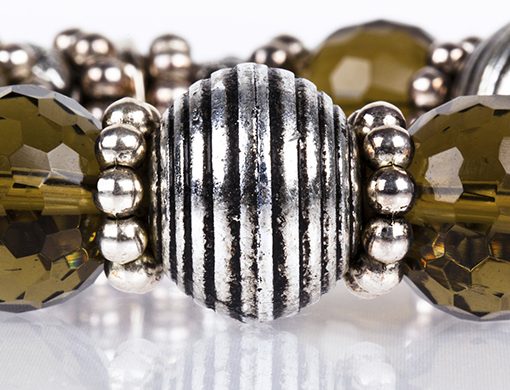Using lead-free pewter alloys for making jewelry helps alleviate health concerns
Adding lead to an alloy can help create characteristics—such as softness and lower melting temperatures—that are useful for many applications. However, lead also is a neurotoxin that is dangerous to animals and humans. Small children are more vulnerable to the effects of lead exposure than adults because their bodies and brains are still developing, so it’s crucial to ensure products that come into contact with children have extremely low levels of lead.
Many fashion jewelry items are made of pewter, a malleable metal alloy that traditionally is 85 to 95 percent tin combined with copper and antimony, which act as hardeners, bismuth, and lead. Pewters containing high amounts of lead are no longer used in items that will come into contact with the human body, such as cups, plates and jewelry. Many production quantities of lead-free pewter contain trace amounts of naturally occurring lead, so as a general rule, alloys classified as lead-free contain less than 0.05 percent lead (500 parts per million (ppm)); however, products intended for use by children need to contain less than 100 ppm of lead, as mandated by the Consumer Product Safety Improvement Act (CPSIA). The CPSIA also requires that children’s metal jewelry be tested by an independent third-party.
For jewelry that is sized for and marketed to children, manufacturers and designers can choose from a variety of lead-free pewters, such as the ENTB and R8L pewter alloys from NEY Metals & Alloys, Brooklyn, N.Y., a company that has been manufacturing pewter alloys for almost 150 years.
In the late 1980s, NEY helped design new lead-free alloys, using bismuth to replace lead and silver to replace cadmium. Over the years the company has built upon those formulas to create lead-free pewter alloys like ENTB, which is certified to have lead content of less than 50 ppm. ENTB works well in spin cast rubber or silicon molds for designs with thick cross sections that require a smooth polished finish with some malleability. NEY also offers a high-purity, economical version of the ENTB alloy, called ENT. Both alloys do not contain antimony, which is important for some regulations, particularly in Europe.
Britannia alloys are another type of lead-free pewter alloy. Typically, they are composed of more than 90 percent tin with the remainder made up of antimony and copper and have a smooth silver surface. NEY’s R8 Britannia alloy works well in spin cast molds for designs with thin cross sections or fine filigree and details that require less malleability and more strength.
The ENTB and R8 lead-free pewter alloys are sold as ingots, so for those looking for smaller quantities of lead-free alloys—such as trade schools that teach hand casting—NEY offers a lead-free pewter alloy in shot form. The B7 alloy contains tin, antimony and copper and can be used in small crucibles and special melts.
The definition of lead-free is constantly evolving and becoming more stringent regarding alloys used in certain applications. As a result, it’s important to stay abreast of changing standards worldwide and use materials that conform to these guidelines to ensure products meet regulations.

